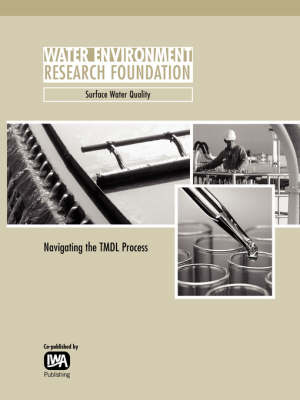WERF Research Report
2 total works
TMDLs, or total maximum daily loads, are required under the Clean Water Act, Section 303(d), for waterbodies that do not attain water quality standards. The objective of this research was to review the existing TMDL process and to develop an improved design for TMDL development where improvements are needed. This objective was accomplished through: (1) Identifying and verifying problems with the existing TMDL program; (2) Formulating a range of recommended improvement options on specific topics that address identified weaknesses; and (3) Providing case studies examples that highlight these recommended changes to improve the TMDL process. The research team identified ten specific areas for improvement, based on a review of approved TMDLs, a survey of state programs, and an in-depth review of specific case study examples. Each topic is addressed in a separate chapter of the report, with a discussion, recommendation of improved approaches where appropriate, and specific examples to help guide water quality professionals when developing or reviewing TMDLs.
Factors for Success in Developing Use Attainability Analysis
by Paul L. Freedman and Tom Dupuis
Published 30 April 2008
A Use Attainability Analysis (UAA) is a process to review and potentially modify a waterbody's designated uses, as embodied in the state water quality standards. A UAA is considered when the uses upon which the water quality criterion are based are not existing or attainable. The process of completing a successful UAA has proven challenging, and it is confounded by a range of technical, regulatory, and institutional considerations that must be addressed in conducting a successful UAA.
This research identifies, highlights, and analyzes the major challenges faced in the UAA process, and reports on the common lessons learned from how these challenges were addressed. Researchers conducted a detailed analysis of more than 50 UAAs, selected from an examination of over 200 UAA efforts with diverse geographic, topical and waterbody representation. Based on this review, 29 findings were developed, which were validated by close examination of case studies. Special attention was focused on three common and challenging situations where UAAs are being considered nationwide: wet weather impacts; urban settings; and effluent-dependent or dominated streams.
The findings, or factors for success, focused on five broad categories of criteria: scientific and technical understanding; legal and regulatory requirements; financial needs and impacts; public awareness and involvement; and regulatory agency preparedness. These findings were transformed into recommendations for activities or approaches that would be supportive of UAA efforts. Case studies illustrating the findings and recommendations are provided along with summaries of selected state programs. The overall result of this research is a User's Guide to UAAs designed to assist stakeholders to become aware of critical factors and information requirements to make well-informed decisions related to their involvement in UAAs.
This research identifies, highlights, and analyzes the major challenges faced in the UAA process, and reports on the common lessons learned from how these challenges were addressed. Researchers conducted a detailed analysis of more than 50 UAAs, selected from an examination of over 200 UAA efforts with diverse geographic, topical and waterbody representation. Based on this review, 29 findings were developed, which were validated by close examination of case studies. Special attention was focused on three common and challenging situations where UAAs are being considered nationwide: wet weather impacts; urban settings; and effluent-dependent or dominated streams.
The findings, or factors for success, focused on five broad categories of criteria: scientific and technical understanding; legal and regulatory requirements; financial needs and impacts; public awareness and involvement; and regulatory agency preparedness. These findings were transformed into recommendations for activities or approaches that would be supportive of UAA efforts. Case studies illustrating the findings and recommendations are provided along with summaries of selected state programs. The overall result of this research is a User's Guide to UAAs designed to assist stakeholders to become aware of critical factors and information requirements to make well-informed decisions related to their involvement in UAAs.

